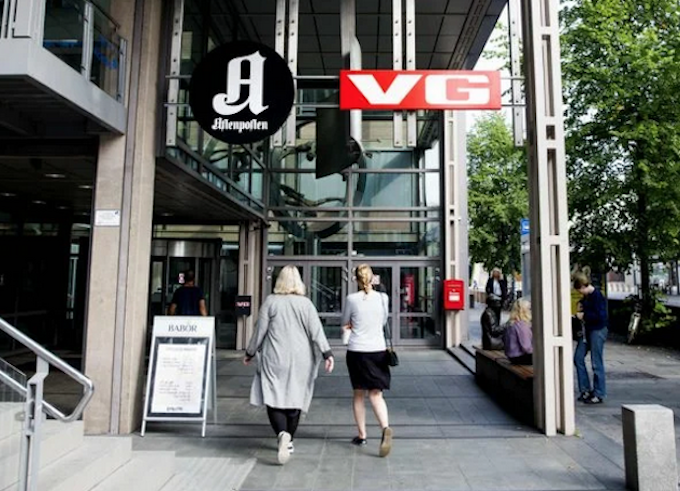
COMMENT: By Gavin Ellis, Knightly Views
I have been reading the tea leaves in the bottom of the online subscription cup.
My fortune-telling has been assisted by some very interesting international statistics.
The pattern in the bottom of the cup is telling me that the winner-takes-most paywall phenomenon that has characterised the US market may not be repeated in the New Zealand market in the longer term.
If we follow the American example of great success by the New York Times and Washington Post, The New Zealand Herald (which is the subscription leader in New Zealand with more than 110,000 online premium subscribers) will soak up the majority of those willing to pay for their news.
In the United States, where 21 percent have paid for online news in the past 12 months, more than half subscribe to either the New York Times or Washington Post and less than a quarter to local or regional sites.
In Britain, the heavyweight nationals – Telegraph, Times, and Guardian – command 55 percent of the paid online market and the very small percentage of Brits who are prepared to pay (only 8 percent) won’t look at paying for papers further down the food chain.
However, the latest Reuters Institute Digital News Report contains statistics that suggest winner-takes-most may not be a foregone conclusion. We could follow the Scandinavian experience.
Norwegian model
In Norway, where close to half the population pay for online news, the three biggest national titles do command a significant subscriber audience between them but so, too, do regional and local news sites. Almost half of the subscribers take either VG, Aftenposten or Dagbladet but almost 60 percent subscribe closer to home.
In Norway, according to the Reuters survey, local newspapers are seen as the “go-to” source for politics (71 percent), crime (73 percent), coronavirus news (53 percent), and things to do (46 percent).
“Our research this year also shows a link between how attached people are to their local community and levels of local news consumption,” the report states. “Respondents in both Austria and Switzerland are amongst those countries that feel most strongly attached and – like Norway – these are also countries where local news consumption tends to be higher and the value of local newspapers is more keenly felt…
“None of this is to suggest that publishers in countries with more attachment are not also suffering from the impact of digital disruption. We see blind spots and decline in most markets, but the fact that local newspapers in Norway are still valued for a local newspaper bundle of different information services gives them a stronger chance of persuading people to pay for online news.”
New Zealand is a country that traditionally has had a regional and local focus in paid-for news. There are historical reasons for that. Transport in the newspaper industry’s formative period was difficult and the country’s topography means it remains expensive.
Newspapers developed around regional and local population centres. Even if they don’t buy it each day, most people will be able to tell you the name of their local newspaper. It is a different story with free-to-air broadcasting.
After short private enterprise experiments, broadcasting became government-owned and news management centralised. Network technology solidified the national focus of television in particular.
Closest to national daily
We have never had a national daily general newspaper. The closest we came was National Business Review’s five-year stint as a daily from the late 1980s. Efforts a decade later to fly The New Zealand Herald into Wellington and the South Island (The Dominion was briefly flown into Auckland) were expensive exercises that could not be sustained as revenue declined and internet use grew.
And, in any event, the Herald was an additional purchase for the majority of buyers in those centres, not an alternative.
Like most countries, New Zealand is still feeling its way through the conundrum of payment for news in the digital age. There are various forms of subscription in the online news market but the most obvious (and numerically superior) is the paywall.
The New Zealand Herald had first mover advantage on paywalls in the daily general news market (National Business Review had long ago introduced an expensive and impenetrable paywall on anything worth reading on its site). It also has far and away the largest regional population base.
So, although it has done remarkably well with its premium subscriptions, it is premature to put the title up there with the winner-take-most titles The New York Times, Washington Post and Britain’s Daily Telegraph.
Stuff has yet to take the subscription plunge but it will come in one shape or another. The donation strategy it currently pursues is drawing support but it is too haphazard in terms of contributions to cashflow. It relies on goodwill and there is no real downside to not donating. How it characterises its subscription strategy will be the key to success or failure.
If it sells itself as a national news source serving all of the country it may come second. NZME is already pursuing that strategy with the Herald brand. It is banking on New Zealand following the US/UK model and last November unveiled plans to make the Herald “New Zealand’s Herald” by, among other things, rebranding its regional titles – Bay of Plenty Herald, Rotorua Herald, Hawkes Bay Herald and so on.
NZME has first-mover advantage
If the US/UK model is working here, NZME has a clear first-mover advantage. If, however, the New Zealand market does not perform to that model, Stuff may capture the same sentiment that is manifesting itself in Norway. If it capitalises on the legacy value of its regional titles as subscriber brands, that could be more successful than the perception of a bunch of JAFAs playing fast and loose with a local masthead that has been around for more than a century.
This does not necessarily mean a host of separate news sites that could be a nightmare to administer. Technology is now clever enough to construct individual and group offerings that are tailored to need. What appears to be a separate site may, in fact, be a subset of Stuff determined by algorithms.
Stuff might like to look to Canada’s Globe and Mail (whose publisher is one-time New Zealand Herald chief executive Phillip Crawley). It has developed artificial learning technology, which it calls Sophi, to automate and optimise a host of publishing decisions around its paywall.
It can, for example, determine what covid-19 information to put behind the paywall and what to provide free for everyone to access. It is a powerful engine that is now used by 11 different publishers across 50 outlets.
The leaves at the bottom of my cup tell me that regional and local brand identity will play a crucial role when the major paid-for news outlets go head-to-head in a subscription contest.
Time will tell whether the dregs of my cup are better at foretelling the future than the cup of someone’s desk at NZME. If I have any advantage it may be that I make a very nice cup of Taylors of Harrogate Yorkshire Tea.
Dr Gavin Ellis holds a PhD in political studies. He is a media consultant and researcher. A former editor-in-chief of The New Zealand Herald, he has a background in journalism and communications – covering both editorial and management roles – that spans more than half a century. Dr Ellis publishes a blog called Knightly Views where this commentary was first published and it is republished by Asia Pacific Report with permission.











































